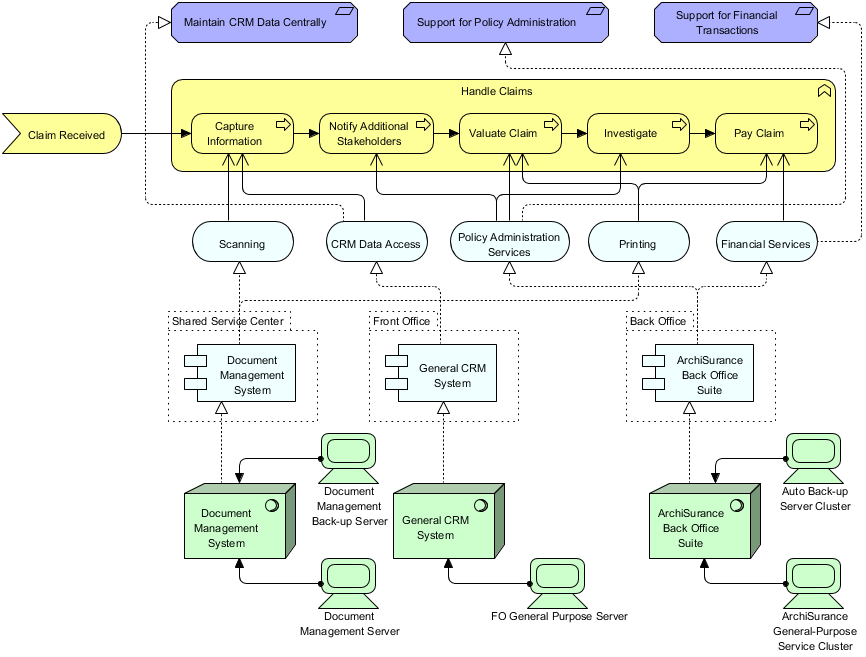
- SEQUENCE DIAGRAM IN ENTERPRISE ARCHITECT HOW TO
- SEQUENCE DIAGRAM IN ENTERPRISE ARCHITECT SOFTWARE
- SEQUENCE DIAGRAM IN ENTERPRISE ARCHITECT SERIES
They represent the different objects or parts that interact with each other in the system during the sequence.Ī lifeline notation with an actor element symbol is used when the particular sequence diagram is owned by a use case.Ī lifeline with an entity element represents system data. No two lifeline notations should overlap each other. A Quick Overview of the Various Parts of a Sequence Diagram Lifeline NotationĪ sequence diagram is made up of several of these lifeline notations that should be arranged horizontally across the top of the diagram. Each object has a column and the messages exchanged between them are represented by arrows.

Sequence Diagram NotationsĪ sequence diagram is structured in such a way that it represents a timeline that begins at the top and descends gradually to mark the sequence of interactions.
SEQUENCE DIAGRAM IN ENTERPRISE ARCHITECT SOFTWARE
They can be used to model both simple and complex interactions between objects, making them a useful tool for software architects, designers, and developers. Sequence diagrams are commonly used in software development to illustrate the behavior of a system or to help developers design and understand complex systems. In simpler words, a sequence diagram shows how different parts of a system work in a ‘sequence’ to get something done. They illustrate how the different parts of a system interact with each other to carry out a function, and the order in which the interactions occur when a particular use case is executed. Sequence diagrams, commonly used by developers, model the interactions between objects in a single use case. Sequence Diagram Templates and Examples.

In this sequence diagram tutorial you will learn about Among the three, sequence diagrams are preferred by both developers and readers alike for their simplicity. These diagrams are used to illustrate interactions between parts within a system. There are 3 types of Interaction diagrams Sequence diagrams, communication diagrams, and timing diagrams.
SEQUENCE DIAGRAM IN ENTERPRISE ARCHITECT HOW TO
Notice how an object lifeline has been used to represent the Insufficient Funds extension use case, which (when triggered) requires no further explanation at this level because there should be an entirely separate sequence diagram showing the behavior of the extension use case.This sequence diagram tutorial is to help you understand sequence diagrams better to explain everything you need to know, from how to draw a sequence diagram to the common mistakes you should avoid when drawing one.

The message label text describes the behavior that the message sender is requesting from the receiver.Ī Message to Self loops back from an Object Lifeline to itself, to show that the business entity or object performs some internal behavior.Ī Message (return) is a dashed message line showing that control is returned to the originator of a message.Ī Constraint is a UML construct showing (for example) that one behavior constraint may not be available in all UML tools and all UML versions, so you may have to use another diagram element – such as a simple note – to indicate this behavior. Messages may be sent to or from an object lifeline in strict sequential order from the top of the lifeline to the bottom.Ī Message from one Object Lifeline to another is indicated by a horizontal line with an arrowhead showing the direction of the message. Our subsequent worked example will utilize the following diagram elements that should be available in most if not all UML tools.Īn Object Lifeline is a vertical line headed by the name and / or classifier type of a business entity or software object. The number and type of diagram elements will vary according to the UML diagramming tool, the version of UML, and the context in which the diagram is to be used. The sequence diagram is arranged in the form of a strict top-to-bottom timeline of interactions – or message exchanges – between business entities or software objects. This diagram therefore helps with the transition from non-object oriented activity diagrams and use case diagrams to the object-oriented paradigm of modern software development. In this installment we progress from the UML Use Case Diagram to the UML Sequence Diagram.Ī UML Sequence Diagram is used most commonly to show the realization of a use case in terms of interactions between business entities or software objects.

SEQUENCE DIAGRAM IN ENTERPRISE ARCHITECT SERIES
This series of articles is designed to present the set of core UML diagrams in a way that emphasizes the important relationships between the different diagrams and the logical progression from one diagram to another.


 0 kommentar(er)
0 kommentar(er)
